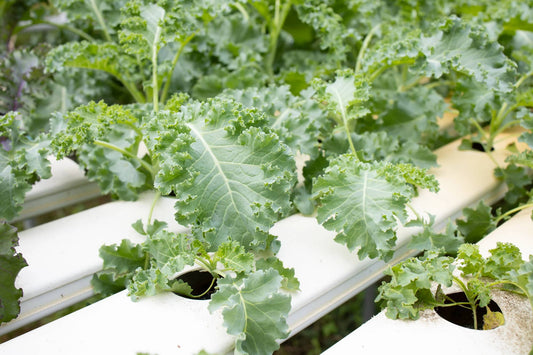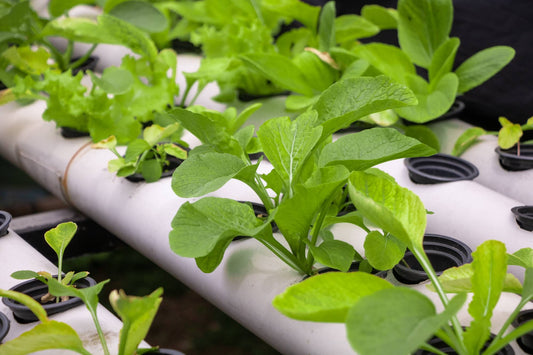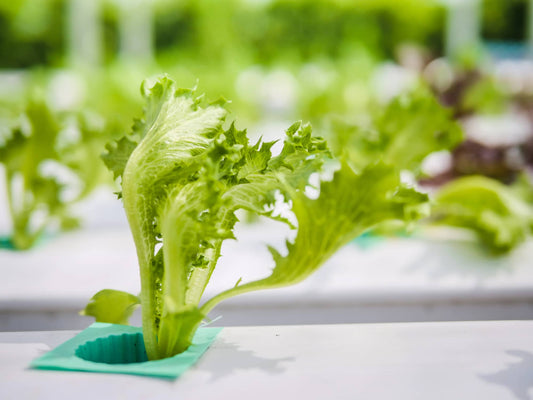Step into the exhilarating world of hydroponic hot peppers, where rapid growth meets a burst of fiery flavor. Grown in nutrient-rich water, hydroponic peppers develop vibrant colors, intense heat, and superior nutritional benefits. Celebrated for their culinary versatility, these peppers contain capsaicin, known for boosting metabolism, promoting heart health, and reducing inflammation. By harnessing the efficiency of hydroponic cultivation, growers can enjoy a consistent and high-yield pepper harvest year-round. This guide covers essential growing conditions, nutrient requirements, and key strategies for optimizing hot pepper production.
Health Benefits of Hot Peppers
- Contain Capsaicin – Capsaicin, the compound responsible for hot peppers' heat, may boost metabolism, aid weight management, and provide natural pain relief.
- Full of Antioxidants – Hot peppers are rich in vitamins C and A, along with flavonoids that help reduce oxidative stress and inflammation, lowering the risk of chronic diseases.
- Heart Health – The bioactive compounds in hot peppers contribute to improved heart health by reducing cholesterol levels and hypertension.
- Skin Health – Vitamin A in hot peppers supports cell growth and repair, enhancing skin elasticity and appearance.
Growing Hydroponic Hot Peppers: Step-by-Step Guide
Growing Cycle
- Germination – Takes between 7–21 days.
- Seedling to Mature Plant – Requires 40–50 days.
- Flowering and Fruit Development – Occurs 60–90 days after planting.
- Harvest – Begins around 90–150 days from seeding, depending on variety and desired ripeness level.
Optimal Growing Conditions
- Season: For outdoor cultivation, hot peppers are best planted in late spring to early summer after the last frost. In hydroponic setups, they can be grown year-round with controlled conditions.
- Temperature: Maintain optimal daytime temperatures between 70°F to 85°F (21°C to 29°C), with nighttime temperatures around 65°F to 70°F (18°C to 21°C) for best results.
- Humidity: A relative humidity of 40% to 70% is ideal for hydroponic hot peppers, promoting healthy growth while preventing moisture-related issues such as fungal diseases.
- Sunlight and Indoor Light Requirements: Hot peppers need at least 6 to 8 hours of direct sunlight daily. In indoor hydroponic systems, a DLI range of 20 to 30 mol/m²/day is recommended to support photosynthesis and capsaicin production.
Nutrient and pH Requirements
Recommended EC (Electrical Conductivity):
- Seedling Stage: Maintain EC at 1.5–2.0 mS/cm to encourage strong root development.
- Vegetative Growth: Increase EC gradually to 2.0–2.5 mS/cm to support robust leaf and stem growth.
- Fruiting Stage: Raise EC levels to 2.5–3.5 mS/cm to optimize fruit development and capsaicin concentration.
pH Range:
- The ideal pH for hydroponic hot peppers is between 5.5 and 6.5, with a target of around 6.0 to ensure optimal nutrient uptake.
Essential Growth Practices
Controlled Stress Technique: Prune older, lower leaves to improve air circulation and light exposure, reducing fungal risks and redirecting energy to fruit production.
Nutrient Level Adjustment: Reducing nitrogen while increasing potassium at the fruiting stage enhances capsaicin concentration, resulting in hotter peppers.
Leaf Trimming: Applying controlled stress by limiting water just before ripening increases capsaicin levels. However, over-stressing can hinder growth, so careful monitoring is essential.
Pollination Assistance
In the absence of natural pollinators, manually pollinate hot peppers by gently shaking the plants or using a small brush to transfer pollen between flowers. This method promotes improved fruit set in indoor hydroponic environments.
Common Hot Pepper Varieties
- Jalapeño – Mild to moderate heat, commonly used fresh or pickled.
- Habanero – Exceptionally hot with fruity undertones, great for sauces.
- Cayenne – Medium-heat pepper, popular in dried and powdered form.
- Serrano – Hotter than jalapeños, ideal for salsas and cooking.
- Bhut Jolokia (Ghost Pepper) – Extremely hot, used sparingly for spicy dishes.
- Carolina Reaper – One of the world's hottest peppers, best for those who love extreme heat.
Conclusion
Hydroponic hot peppers flourish in controlled environments, yielding high production with enhanced heat and flavor. By ensuring optimal environmental conditions, nutrient balance, and thoughtful pruning, growers can maximize pepper growth and capsaicin content. Whether cultivating for personal enjoyment or commercial purposes, hydroponic methods enable a year-round supply of spicy, nutritious hot peppers.




